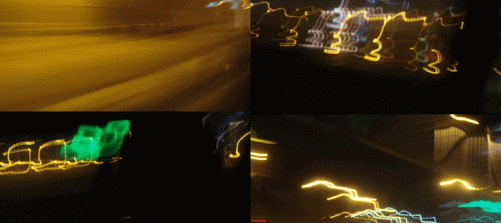In our conceptualization of the act that we provisionally titled “Togh lini pat(k)erazm” [Let there be im(war)ge], Arpi Adamyan, lusine talalyan, and I used defamiliarization to question and unsettle specific assumptions (and silences) about queer presences that abound in Armenian culture. The part-scripted and part-improvisational performance took place in the circular basin of a temporarily dysfunctional fountain in the Republic Square, in front of the National Gallery of Armenia. It was aimed at queering and reinscribing a space that has been consistently used as an active official arena during the Soviet era, bearing the statue of Lenin with a platform at its base for Party leaders to address the nation, and later, after the dissolution of the Soviet Union—as a site for protests and demonstrations against the political regime. By the late 2000s, the Republic Square was reclaimed by the new government for holding its military parades and further degenerated into a tourist zone, attracting hundreds of tourists both from abroad and from the provinces of the country. The fountain complex, which was a part of the Square’s architectural composition designed by Aleksandr Tamanyan, was built in 1939 and reengineered in the 1970s to become the most modern spectacle of water and sound in Yerevan. It was repaired and reopened on Independence Day in 2007, having been reinscribed with a new set of symbols such as nationalism, militarism, consumerism, pop culture, etc. As we descend into the fountain basin on January 1, 2010, at 2:11am, the panopticon-like Republic Square is still overcrowded with mostly young people celebrating the New Year.
For us, the concept of im(war)ge is suggestive of a mechanism—a representation—that is at war with itself. It is a self-conflicted, unsettled and unsettling fabula within a Foucauldian panoptic space constructed by the continuous gazes of disciplinary bodies (such as the city mayor, the museum curator, the security, etc.) and the discontinuous gazes of dissident collectivities that aim to “occupy” a space by queering the familiar, the normalized, and the habituated construct. (* 2 ) The space then is transiently inhabited by three artists who are making up their own absurdist “realities” and reinventing the space from the bottom of the Singing Fountains, the main function of which is to enhance the grandeur and power of the state structures such as the House of the Government, the Ministry of Finance and the Ministry of Foreign Affairs that encircle us. Of course, at this opportune moment the fountains have been turned off and aren’t functioning in their “normal” way and this conditions our kairos, which is the classical measure of highly interpretive, situational, and thus subjective timing.
(* 2 ) The space then is transiently inhabited by three artists who are making up their own absurdist “realities” and reinventing the space from the bottom of the Singing Fountains, the main function of which is to enhance the grandeur and power of the state structures such as the House of the Government, the Ministry of Finance and the Ministry of Foreign Affairs that encircle us. Of course, at this opportune moment the fountains have been turned off and aren’t functioning in their “normal” way and this conditions our kairos, which is the classical measure of highly interpretive, situational, and thus subjective timing.
Moving freely in the demarcated space of the basin and swinging a large yellow yarn ball filled with paper like a pendulum, Arpi Adamyan performs a movement that imitates the motion of timekeeping. But the irregular movement that often breaks from the oscillating back and forth pattern also perhaps evokes the swinging wrecking ball, a demolition weapon aimed, on the one hand, at the image of the artist as an inert waiter (both waiting for admittance and waiting on the curator) and, on the other, the museum as a regulatory institution that closets art(ists) in storage vaults. This ideological image of subservient artists producing uniform (heteronormative) “realist” art, whether conforming to the (Communist) Party or Republicanism, still drives the cultural politics of Armenia today. To deflect this conforming gaze, which operates by holding artists such as Sergei Parajanov (1924-1990) or Gayane Khachaturyan (1942-2009) in the waiting rooms of museums that serve as reformatory institutions for nonconformists, Adamyan carnivalizes the repressive processes of such archivization. She proposes a scenario in which the masked artist perverts the silent waiter, who deftly and unobtrusively serves what has been ordered, by temporarily suspending and subverting the rules and regulations at the asylum-museum.
Shushan Avagyan ( 2013): IN AND BETWEEN THE (RE)PUBLIC. In: p/art/icipate – Kultur aktiv gestalten # 02 , https://www.p-art-icipate.net/in-and-between-the-republic/




 Artikel drucken
Artikel drucken